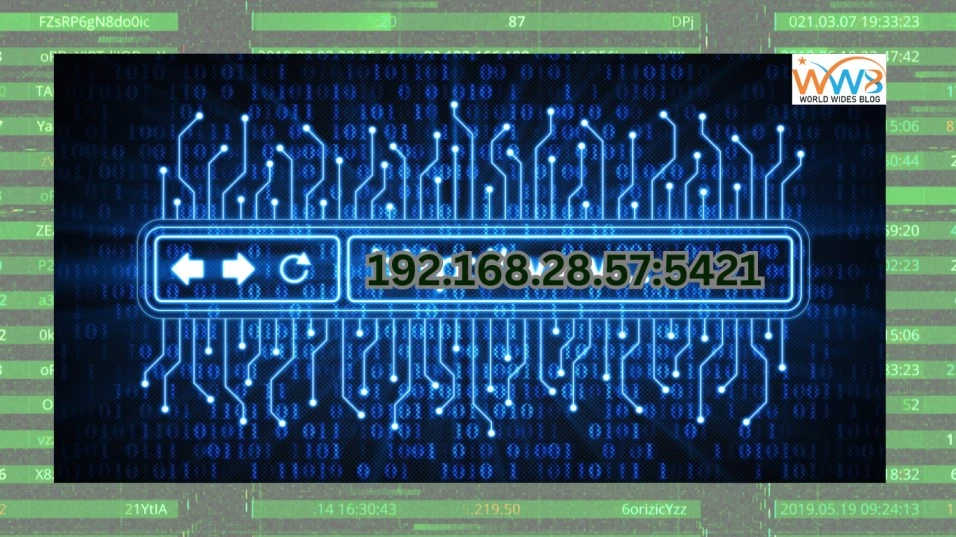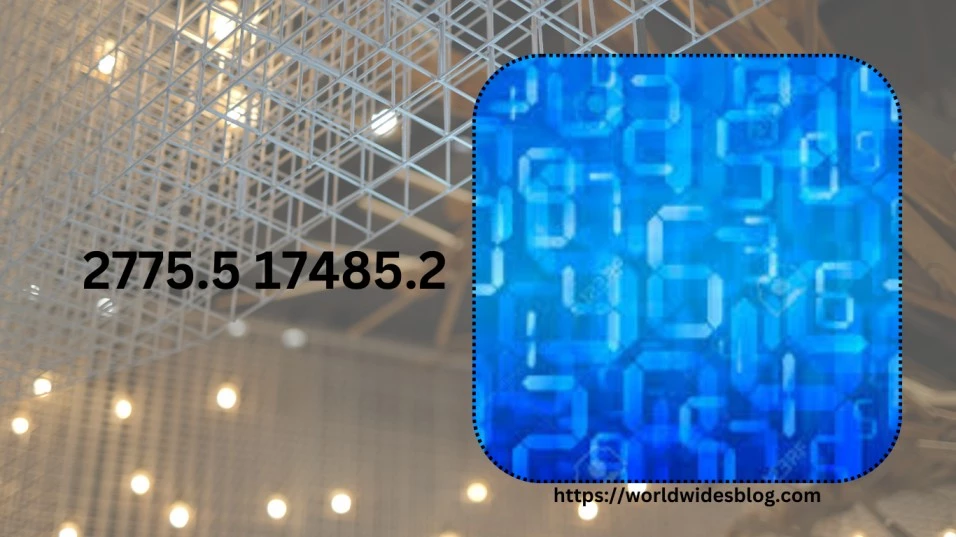In networking, numbers like 192.168.28.57:5421 may seem cryptic at first glance. However, these numbers hold significant meaning, especially when managing local networks. This guide will explain what 192.168.28.57:5421′ represents and how it functions within a network, offering insights into IP addresses, port numbers, and their practical applications.
What is 192.168.28.57:5421?
The Significance of IP Addresses
IP addresses are like the digital addresses of devices on a network. Just like you need a home address to get mail, a device needs an IP address to talk to other devices in a network. Understanding IP addresses is crucial for anyone working with or setting up a network.
Breaking Down the Address: 192.168.28.57
The IP address “192.168.28.57” is private. This means it’s used for local networking rather than connecting directly to the broader internet. Devices on the same local network can communicate with each other using this address without exposure to the outside world.
Understanding the Port Number 5421
A port number is an essential component of networking, functioning as a communication endpoint for a device. The number 5421 is one of the many ports a device can use to facilitate specific types of network communication. Each port corresponds to a particular service or application, ensuring that data is directed to the correct destination within a device.
Port 5421 is not commonly associated with a specific service, making it versatile for custom applications or services within a private network. It can be used for various purposes, including data transmission between devices, running custom servers, or other specialized tasks.
How IP Addresses and Work Together Port Numbers
IP addresses and port numbers are like addresses and apartment numbers. The IP address directs the data to the correct building (device), while the port number ensures it reaches the suitable apartment (application or service). This combination is essential for the smooth operation of networks, as it allows multiple services to run simultaneously on a single device without interference.
Use Cases of 192.168.28.57:5421
The combination of 192.168.28.57 and port 5421 can be applied in various scenarios:
- Home Networking: This IP and port combination can be used to set up custom servers or manage smart home devices that require specific communication channels.
- Business Networks: Small offices might use this setup to manage internal communications or run custom applications critical to business operations.
Configuring Your Network to Use 192.168.28.57:5421
Setting up your network to use 192.168.28.57:5421 is straightforward but requires careful attention to detail:
- Assign the IP Address: Ensure that the device you wish to use has the IP address 192.168.28.57 assigned to it.
- Open the Port: Configure your router or firewall to allow traffic through port 5421.
- Test the Connection: Use network diagnostic tools to ensure the IP address and port are correctly configured and operational.
Troubleshooting Issues with 192.168.28.57:5421′
When using a specific IP address and port combination, like 192.168.28.57:5421′, you might encounter various issues that can disrupt your network’s functionality. Understanding and diagnosing common problems can help you quickly restore normal operations.
Common Problems and Solutions
- Port Blocking:
- Problem: Your router or firewall might block traffic on port 5421, preventing communication between devices.
- Solution: Check your router’s or firewall’s settings to ensure port 5421 is open and configured correctly. You may need to create a specific rule to allow traffic through this port.
- IP Address Conflicts:
- Problem: Two devices on your network might be assigned the same IP address, causing a conflict and disrupting communication.
- Solution: Verify that no other device on your network uses IP address 192.168.28.57. To resolve the conflict, you can manually assign a different IP address to one of the devices.
- Network Latency:
- Problem: High network traffic or poor configuration can cause delays, leading to slow communication or dropped connections on port 5421.
- Solution: Reduce network congestion by limiting bandwidth-intensive activities or upgrading your network hardware. You can also prioritize traffic on port 5421 using your router’s Quality of Service (QoS) settings.
- Incorrect Network Configuration:
- Problem: The device or application may incorrectly configured to use 192.168.28.57:5421, leading to connection failures.
- Solution: Double-check the device or application’s configuration settings to ensure they use the correct IP address and port number. Also, check that the subnet mask and gateway settings are correct.
- Firewall Restrictions:
- Problem: Some firewalls must be more relaxed, blocking necessary traffic even when the port is open.
- Solution: Review and adjust your firewall rules to allow traffic on port 5421. You should add an exception for the specific IP address or application that requires access.
Tools for Diagnosing Network Issues
- Ping and Traceroute:
- Purpose: These essential network utilities can help you determine whether the IP address 192.168.28.57 is reachable and identify where the connection might fail.
- Usage: Use the ping command to check if the IP address is responding. If it fails, the traceroute can show you the path data takes through the network and where it might get stuck.
- Port Scanner:
- Purpose: You can use a port scanner to see if port 5421 is open and reachable on your network.
- Usage: Use tools like Nmap to scan your network and verify that port 5421 is open. This can also help you identify any unauthorized services running on your network.
- Network Monitoring Tools:
- Purpose: Tools like Wireshark or SolarWinds can help you monitor real-time network traffic, identify bottlenecks, and detect unusual activity on port 5421.
- Usage: Set up these tools to capture traffic on 192.168.28.57:5421 and analyze the data to spot potential issues like excessive latency or unauthorized access attempts.
- Router and Firewall Logs:
- Purpose: Logs can provide detailed information about any blocked traffic or errors on your network.
- Usage: Access the logs on your router or firewall to check for any entries related to 192.168.28.57:5421′. This can help you identify and troubleshoot specific issues.
- IP Conflict Detection Tools:
- Purpose: These tools can automatically detect and resolve IP conflicts on your network.
- Usage: Use tools like Advanced IP Scanner or Angry IP Scanner to identify IP conflicts involving 192.168.28.57. This will allow you to quickly address the issue by reassigning IP addresses.
By systematically troubleshooting and using the right tools, you can resolve most issues related to 192.168.28.57:5421 and ensure your network operates smoothly and efficiently.
Security Considerations
When using 192.168.28.57:5421, it’s crucial to keep security in mind:
- Use Strong Passwords: Ensure that devices and applications using this IP and port protected by strong passwords.
- Regular Updates: Keep your network devices updated with the latest firmware to protect against vulnerabilities.
- Monitor Traffic: Use network monitoring tools for suspicious activity on port 5421.
Comparing 192.168.28.57:5421 with Other IPs and Ports
Understanding how 192.168.28.57:5421 compares with other IP addresses and ports can help in making informed networking decisions:
- Public vs. Private IPs: Unlike private IPs like 192.168.28.57, public IPs are accessible over the internet, making them more vulnerable to attacks.
- Choosing Ports: Different applications require different ports. For example, HTTP usually uses port 80, and HTTPS uses port 443.
Advanced Networking Concepts
To fully grasp the significance of 192.168.28.57:5421′, it’s helpful to understand some advanced networking concepts:
- NAT (Network Address Translation): NAT allows multiple devices within a private network to share a single public IP address, enabling efficient use of IP resources.
- DHCP (Dynamic Host Configuration Protocol): DHCP automatically assigns IP addresses to devices within a network, simplifying network management.
Real-World Examples of 192.168.28.57:5421 Usage
Here are some real-world scenarios where 192.168.28.57:5421 might be used:
- Home Automation Systems: This IP and port combination can manage smart home devices like security cameras or thermostats.
- Small Office Networks: Small businesses use this setup to run internal servers or manage department communications.
Optimizing Network Performance
To ensure that your network operates smoothly with 192.168.28.57:5421, consider these optimization tips:
- Use Quality of Service (QoS): QoS settings can prioritize traffic on port 5421, ensuring that critical applications receive the necessary bandwidth.
- Regular Monitoring: Use network monitoring tools to quickly check traffic and find problems.
The Future of Networking with IPs and Ports
As networking technology evolves, the way we use IP addresses and ports like 192.168.28.57:5421′ will continue to change:
- IPv6 Adoption: As IPv6 adoption increases, the need for NAT will decrease, and private IP addresses will become less critical.
- Emerging Trends: New technologies like SD-WAN (Software-Defined Wide Area Networking) are changing how businesses manage their networks, making traffic control and optimization easier.
Conclusion
It’s important to understand 192.168.28.57:5421 if you manage a local network. Whether setting up a home automation system or running a small business network, knowing how to configure and secure this IP and port combination can significantly affect your network’s performance and security. By following the guidelines provided in this article, you can ensure that your network operates smoothly and securely.
FAQs
What is an IP address, and why is it important?
- An IP address is a unique identifier for a device on a network, crucial for communication between devices.
Can I change the port number to 192.168.28.57:5421′?
- Yes, you can change the port number, but it requires access to the device’s settings and knowledge of network configuration.
How can I ensure my network is secure?
To keep your network safe:
- Use strong passwords.
- Turn on firewalls.
- Update your devices regularly.
What should I do if I can’t access 192.168.28.57:5421?
- Check your network settings, ensure the device powered on, and confirm that the correct service runs on port 5421.
Are there any risks associated with using private IP addresses?
- While private IP addresses are generally secure, poor network practices can expose them to risks, so proper security measures are essential.




